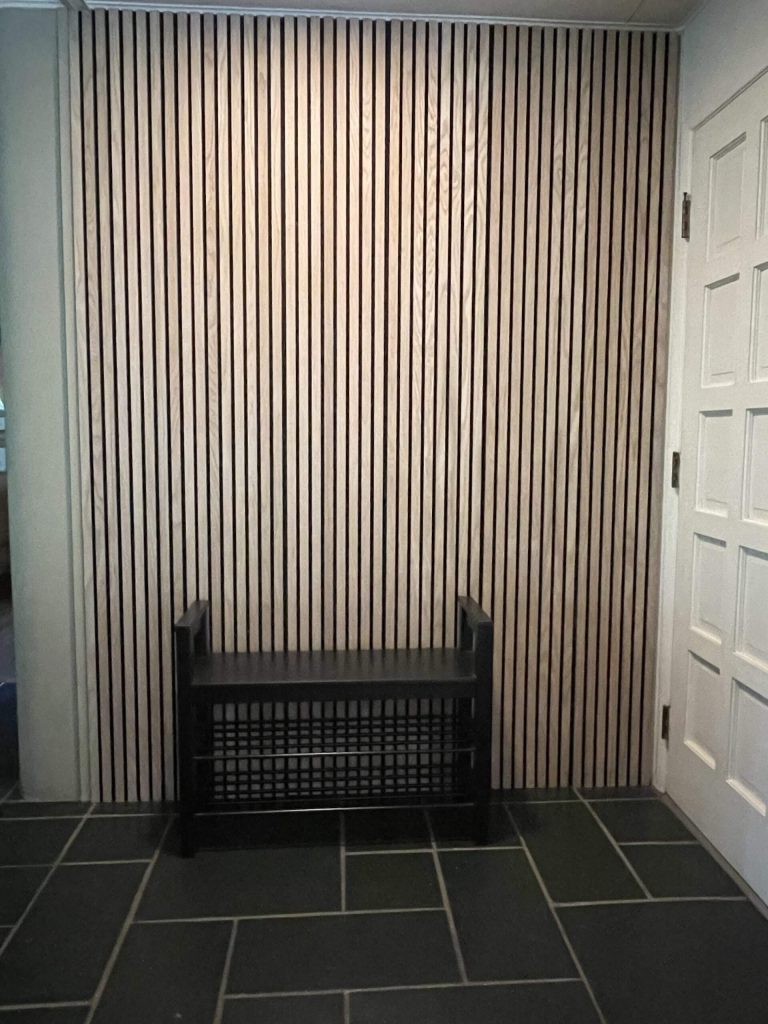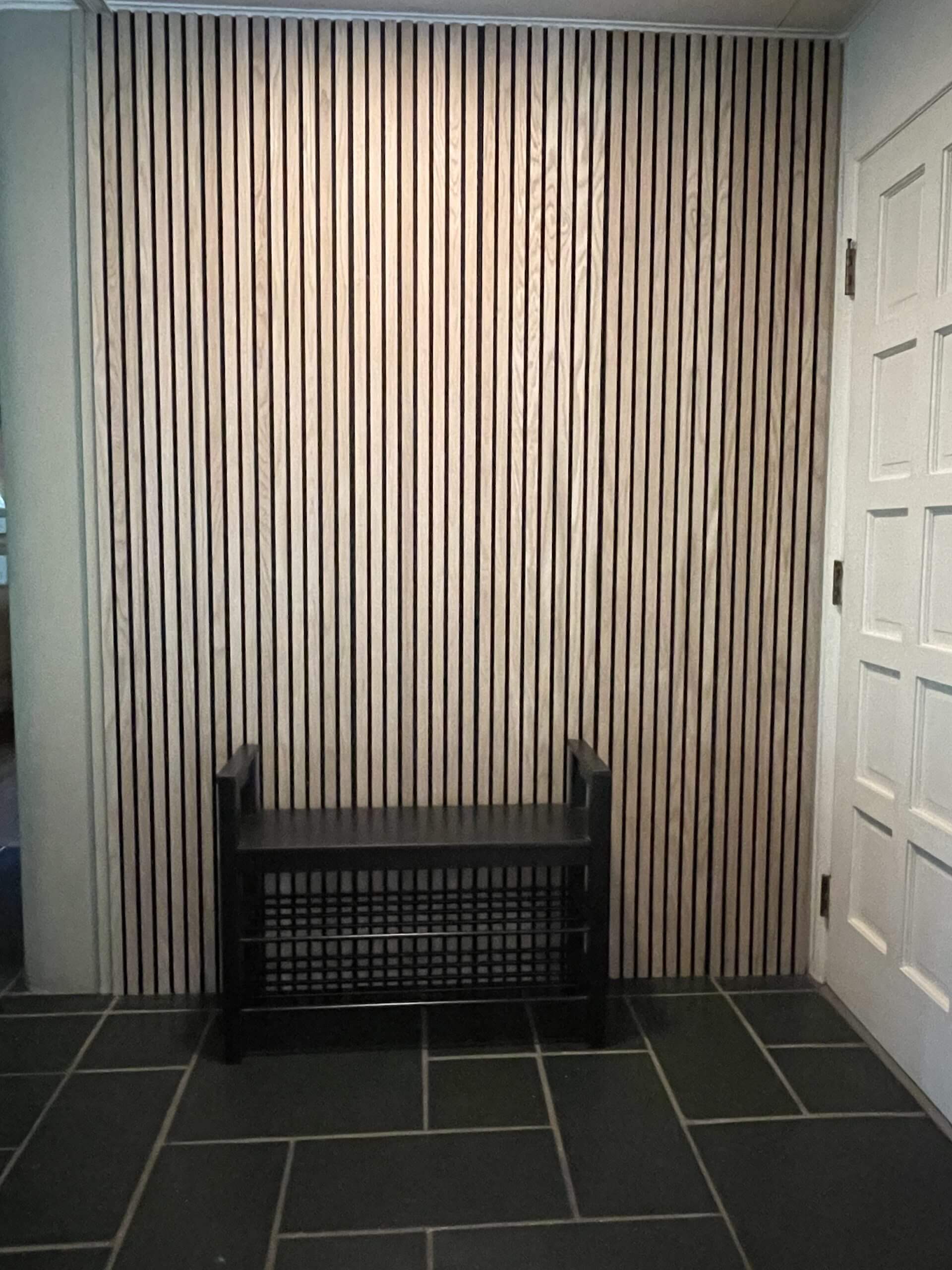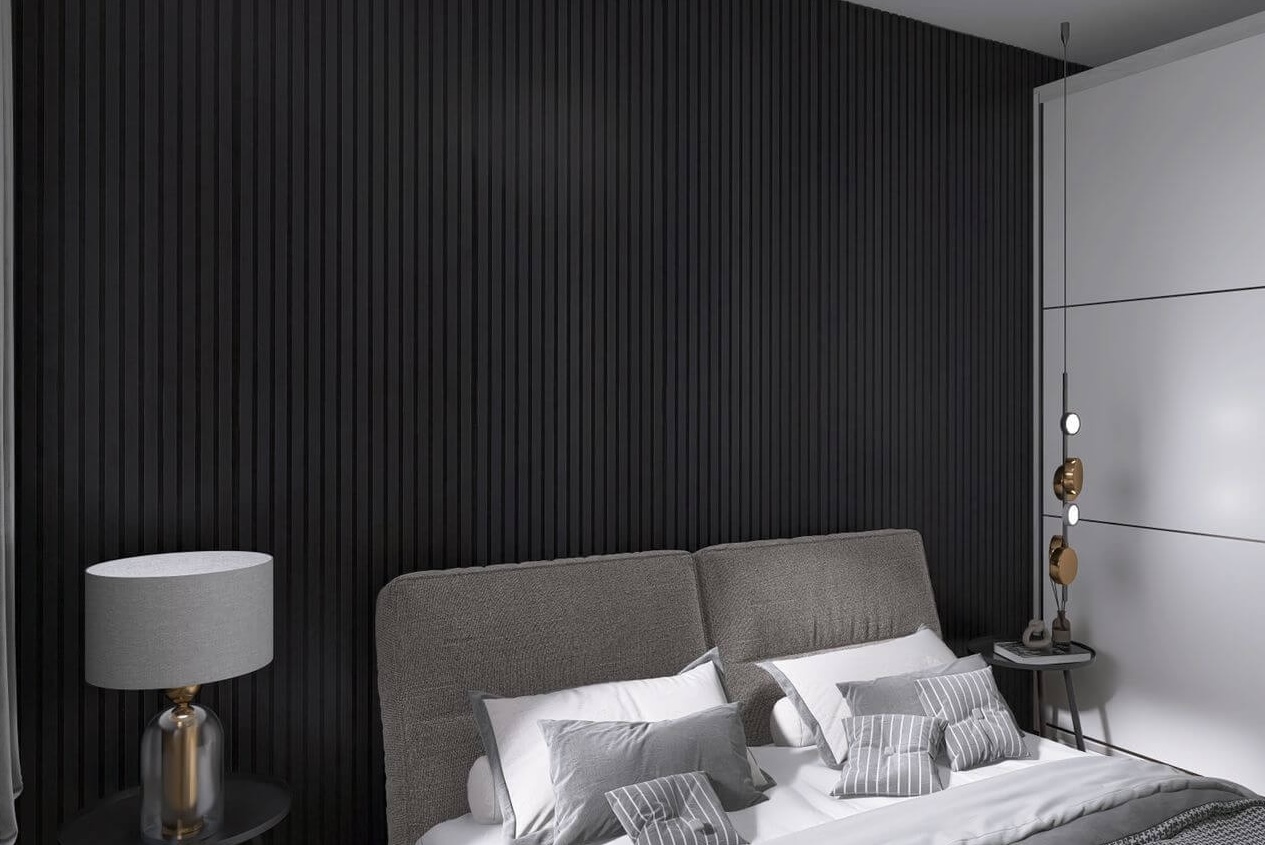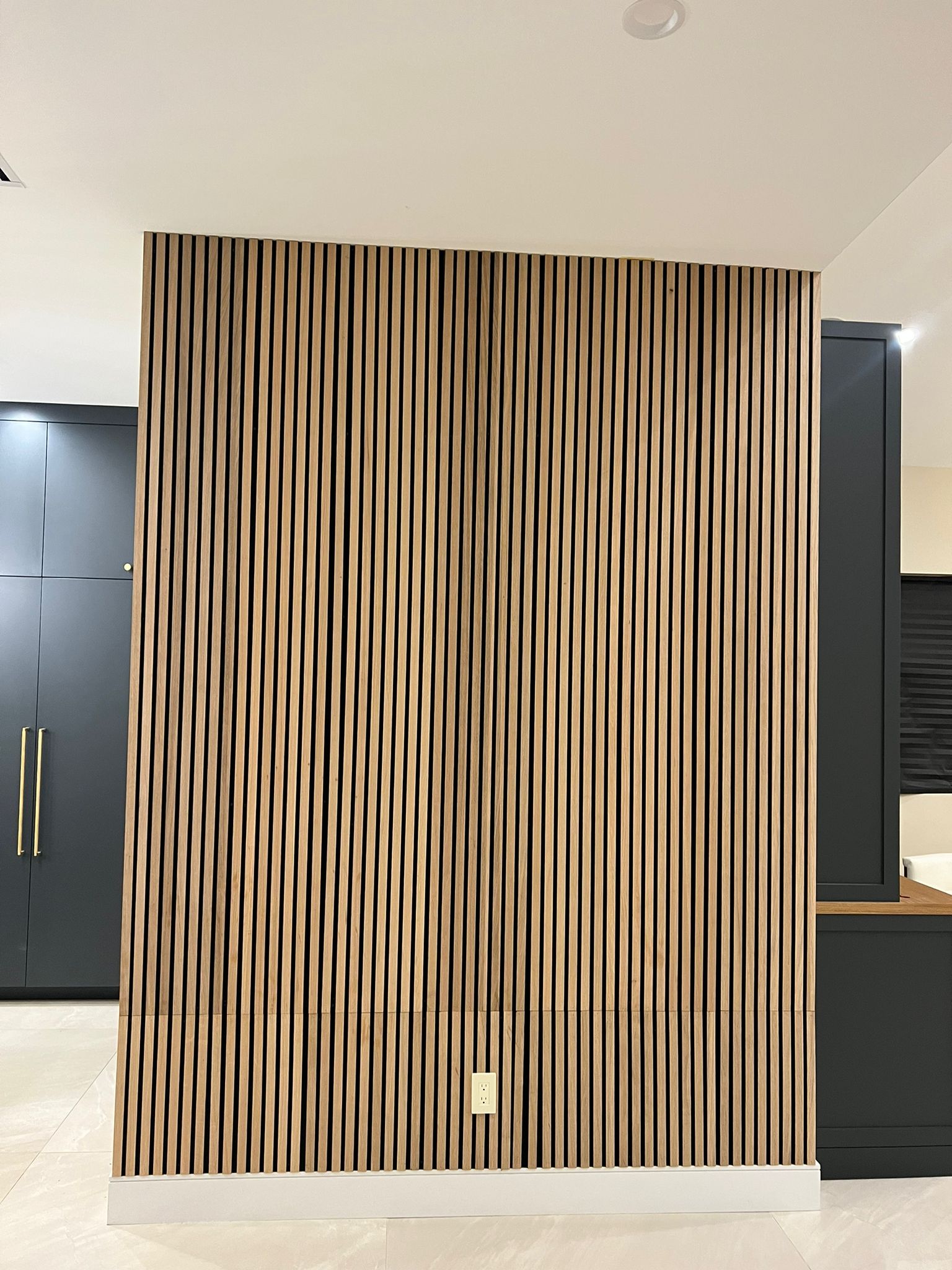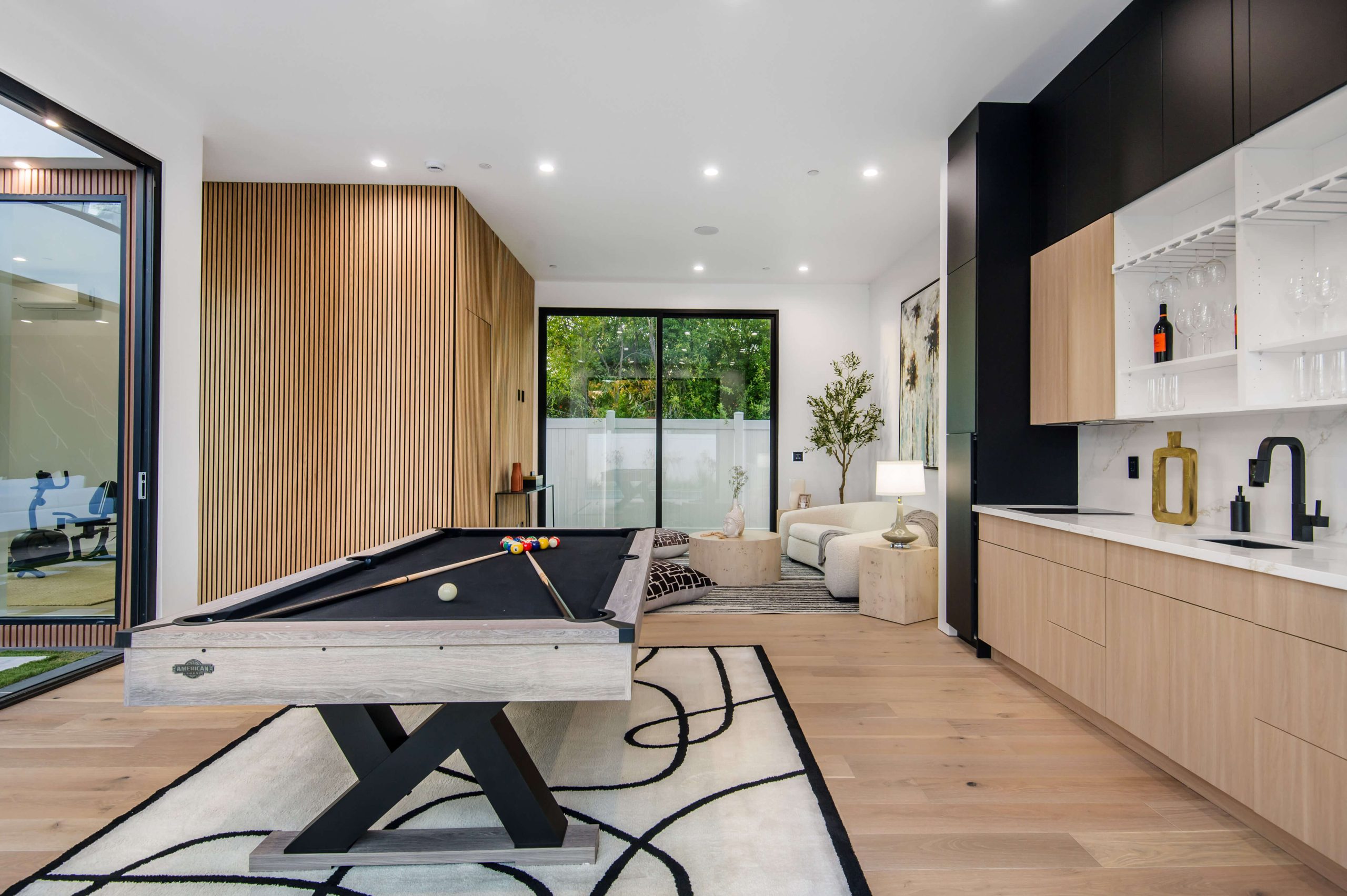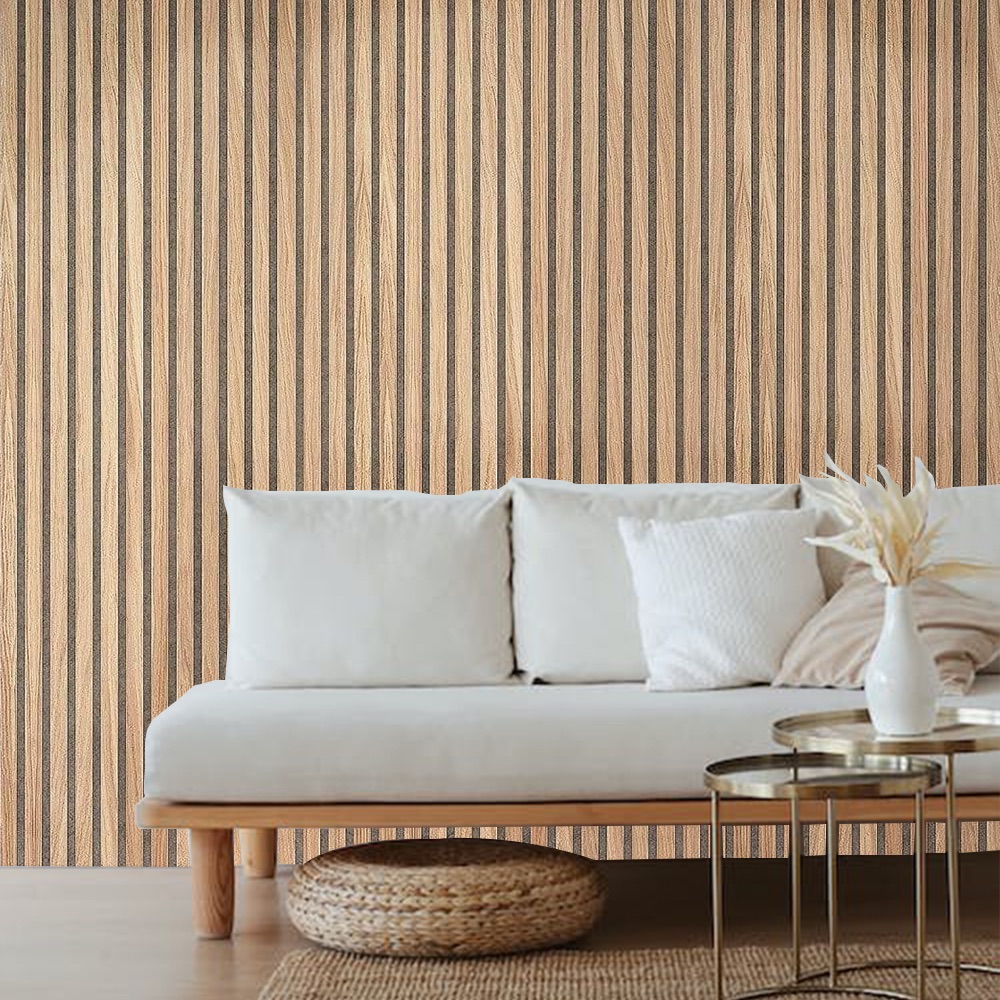When your space is small, adding wood panels can make it feel warm, stylish, and spacious—if done right. Using wood panel ideas for small spaces helps blend beauty and function. This guide offers clear, experience-based tips, real examples, and helpful design ideas to transform your compact rooms into cozy retreats.
Why wood panels work in small rooms
Wood panels often feel heavy, but with smart design, they enhance small spaces by:
- Reflecting light and adding texture: Light-toned or thin panels avoid darkness and enrich visual interest.
- Creating cohesion: Matching panels across ceiling, walls, or furniture keeps things seamless.
- Offering built-in function: Slat-style panels can double as acoustic treatments or storage.
- Concealing imperfections: Good for hiding cable tracks, uneven walls, or wear and tear.
Light vs. dark panels: picking your palette
Choosing the right tone is key. Here’s a quick reference:
| Tone | Pros | Cons |
|---|---|---|
| Light wood | Brightens, feels roomy, reflects natural light | Shows stains or dents easily |
| Medium wood | Warm and balanced; hides minor damage | Can look dated if over-used |
| Dark wood | Dramatic, cozy, hides marks | Makes small rooms feel smaller |
Think of a small reading nook: light-tone panels can enhance brightness, while dark wood might make it feel intimate like a study.
Creative layout ideas with wood panel ideas for small spaces
1. Vertical slats for height
Thin vertical slats draw the eye up, making ceilings feel taller. Try pairing slats with mirror strips to visually expand the space. For sleek results, check out bold slatted options like Natural Oak Acoustic Slat panels, which blend style and sound control seamlessly.
2. Horizontal panels for width
To make a narrow room feel wider, run panels horizontally across a single accent wall. Consider rich tones like these Natural Walnut Wall panels for warmth that still keeps the space light and welcoming.
3. Diagonal or chevron patterns
Impress without overwhelm: a diagonal chevron accent above a sofa or headboard adds interest. Use subtle tones like grey-oak combined with Grey Oak Felt options to introduce texture and softness, making the space appear larger and airier.
4. Low wainscoting style
Cover the bottom third of the wall with panels in lighter wood tones, leaving upper walls painted. This approach saves cost and keeps brightness. Add hooks or a shelf above for extra storage in small spaces like entryways.
5. Ceiling panels: unexpected flair
Wood ceilings can elevate a small space like a study or boutique kitchen. Light-colored or mixed slat panels reflect light and draw attention upward. Want drama? Contrast a ceiling of dark-toned panels like Black Real Oak with pale walls for modern elegance.
Functional benefits beyond looks
Wood panels aren’t just pretty—they’re practical:
- Acoustic damping: Slatted panels, like acoustic options, soften noise—great for home offices or hobby rooms.
- Built-in storage solutions: Thicker panels can integrate slots or hooks for organization.
- Surface protection: Durable wood guards walls in busy zones like playrooms or hallways.
- Concealed wiring: Design a panelled false wall to hide cables for TV or lighting without drilling.
Step-by-step plan for a small space transformation
- Measure carefully
Note wall dimensions, ceiling height, and any windows or openings. - Choose your panel style
Slats? Solid? Shiplap? Decide based on tone, purpose, and style. - Pick your finish
Light, medium, or dark? Think about natural logs or veneers. - Decide installation pattern
Vertical, horizontal, diagonal—each alters the room’s perceived size. - Prep the walls
Remove outlets, seal cracks, and ensure walls are smooth and clean. - Install with care
Use furring strips for level mounting, fix panels securely, and keep joints clean. - Add finishing touches
Paint or stain any exposed seams. Seal slatted panels to help durability. - Style and accessorize
Soften with rugs, add functional shelving, hang plants or art.
Example makeovers using wood panel ideas for small spaces
- Compact home office: vertical oak slats behind a desk for warmth and light reflection; cables hidden behind panels.
- Reading corner: low wainscoting in walnut topped with comfy cushions; oversize art adds height.
- Micro-kitchen backsplash: durable grey oak felt behind a prep counter – stylish and easy to wipe clean.
- Sleepy reading loft: ceiling panels in black oak, walls painted soft white, with vertical slats behind the headboard for texture.
Each example uses wood panel ideas for small spaces to solve specific needs: light, sound, storage, or cosiness.
Tips to avoid common mistakes
- Don’t overdo dark tones: too much can shrink a room. One accent wall is enough.
- Plan lighting well: wood absorbs light. Mix recessed lights, pendants, or sconces.
- Mind panel thickness: thick panels swallow space; 10–15mm thickness keeps things sleek.
- Mind moisture: avoid installing untreated wood panels near sinks or in humid spots.
- Use consistent finish: mix wood species carefully—oak and walnut can clash if uncoordinated.
Finishing your space with flair
After installation, integrate:
- Built-in shelving or magnet strips
- Small potted plants for freshness
- Uplight LED strips behind panels for ambient pull
- A rug that complements wood tones
These final touches make your space functional and inviting.
● Ready to upgrade? Check out the rich warmth of Natural Walnut Wall panels as an accent to elevate your small space.
● Add drama with dark elegance using Black Real Oak finish panels on a feature wall or ceiling.
● Enhance texture with durable Grey oak felt panels, practical for high-traffic zones.
For full installations that combine style and acoustics, explore Natural Oak Acoustic Slat panels for a whisper of sophistication along with real-world performance.
Want more inspiration? Dive into our blog on transformative wood panel projects that elevate any room—small or large.
Wood panel ideas for small spaces aren’t just about surface appeal—they address real design challenges like lighting, texture, dimensions, and functionality. By choosing light tones, smart layouts, and high-performance finishes, your small room can feel bigger, cozier, and genuinely yours.
Ready to start? Pick your favorite style, measure carefully, and install thoughtfully. Your compact corner can become a lived-in masterpiece, combining practicality with a personal statement.
FAQs
1. How do I choose the right wood panel style for my small room?
Start by considering your goal—do you want to make the space look taller, wider, or more cozy? Vertical slats help with height, horizontal panels add width, and light tones keep things airy. Think about where you’re placing the panels (walls, ceilings, accents) and whether you need added features like sound absorption or cable concealment.
2. Will wood panels make my small space feel even smaller?
Not if you choose the right design. Light-colored wood panels and vertical or horizontal patterns can actually make a room feel larger. Avoid overly dark tones on all walls; instead, use them as accents to add depth without closing in the space.
3. Can I install wood wall panels myself, or do I need a professional?
Yes, many wood panels are designed for DIY installation. If you’re handy with measuring, leveling, and using simple tools, you can manage the project. However, for ceiling installations or intricate layouts, hiring a professional can ensure a perfect finish.
4. Are wood panels safe for bathrooms or kitchens?
Wood panels can be used in moisture-prone areas if they are sealed properly or made from moisture-resistant materials. For kitchens, panels like grey oak felt are ideal for backsplashes, while sealed finishes help prevent warping in humid environments.
5. What’s the best way to clean and maintain wood wall panels?
Use a soft cloth or vacuum brush for regular dusting. For spills or smudges, a damp cloth with mild soap works well. Avoid soaking the wood or using harsh chemicals, especially on natural finishes.

